We are talking about the advantages and disadvantages of polycarbonate for the construction of greenhouses and give advice on the correct choice of material.
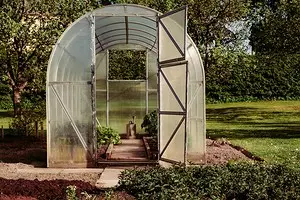
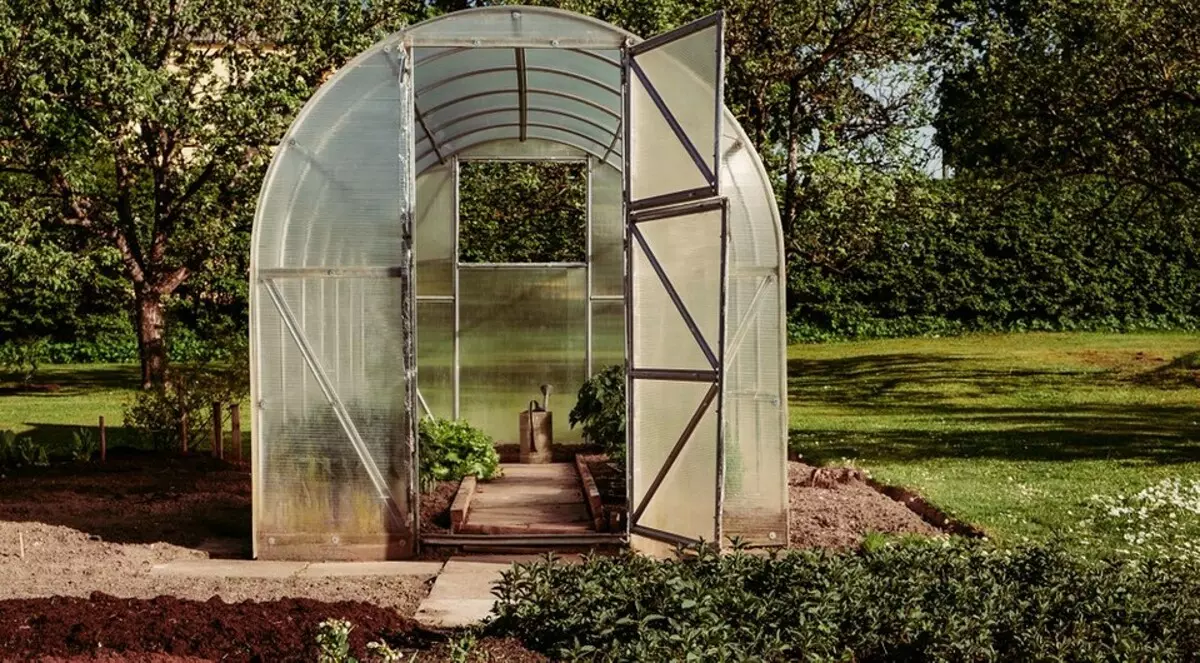
In many cottages, there is a greenhouse, or even two. Early vegetables, seedlings and more are grown here. The owner wants the greenhouse shelter to serve a long time and did not require repair. This is possible, provided that it is collected from high-quality materials. We will understand which polycarbonate is better to use for the greenhouse: thickness, structure, color and other features.
All about polycarbonate for the construction of greenhouses
What it isFive important characteristics
- Thickness
- Geometry of cells
- protection against UV rays
- Color
- Dimensional features
Output
What you need to know about polycarbonate (PC)
The polymer belongs to the group of thermoplastics. It is a complex polyester of ductoman phenol and coalic acid. As a result of processing of raw materials, a transparent plastic is slightly yellowish. Distinguish two varieties of material. The monolithic PC is a solid sheet. It is durable, but at the same time very heavy, it is impossible to bend it. The thermal conductivity of the monolith is quite high. Therefore, for the manufacture of greenhouses, this type is not suitable. It is in demand in construction and other areas.
Cellular plastic has a completely different structure. Two or three thin plates are visible on the cut. They are connected to the leaps, working as stiffeners. Their inner space is filled with air. This significantly increases the insulation characteristics of the material. Sheets are single, two-chamber or more. Cellular polymer is the best choice for the build of greenhouses.
Benefits of cellular PC
- Small weight. The exact parameters are determined by the panel thickness, but in any case, the mass will be much smaller than the glass. Therefore, the load on the greenhouse frame is significantly lower.
- High light skipping ability. Transparent polymer misses the sun's rays well. Through the colorless coating, about 92% of light radiation, through color less. In addition, polycarbonate gently dispels light, which is favorably affected by plants.
- Strength. Coating withstands a significant load. It is not broken when the glass is hit, and does not break like a film.
- Plasticity and flexibility. The polymer can be bend and give it different forms. Due to this, it is possible to collect arched greenhouse structures.
- Resistance to adverse factors. PC easily tolerates temperature differences, resistant to biological effects. It is almost not lit, since its manufacturing technology involves making flames.
- Good thermal insulation characteristics. The cell structure makes PC with excellent insulator. This allows you to significantly reduce plant heating costs.
- The service life of polycarbonate is 10-15 years old. Some manufacturers give just such a guarantee for their products. It is clear that such a service life is only in high-quality certified materials.
disadvantages
- It is collapsed under the influence of ultraviolet. Therefore, special protection is required. Without it, plastic disintegrates in one or two years.
- Sensitivity to aggressive chemistry. Solvents, acids, alkali and substances similar to them destroy plastic. For cleaning the coating, only a neutral soft detergent is used.
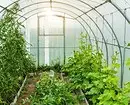
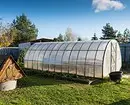
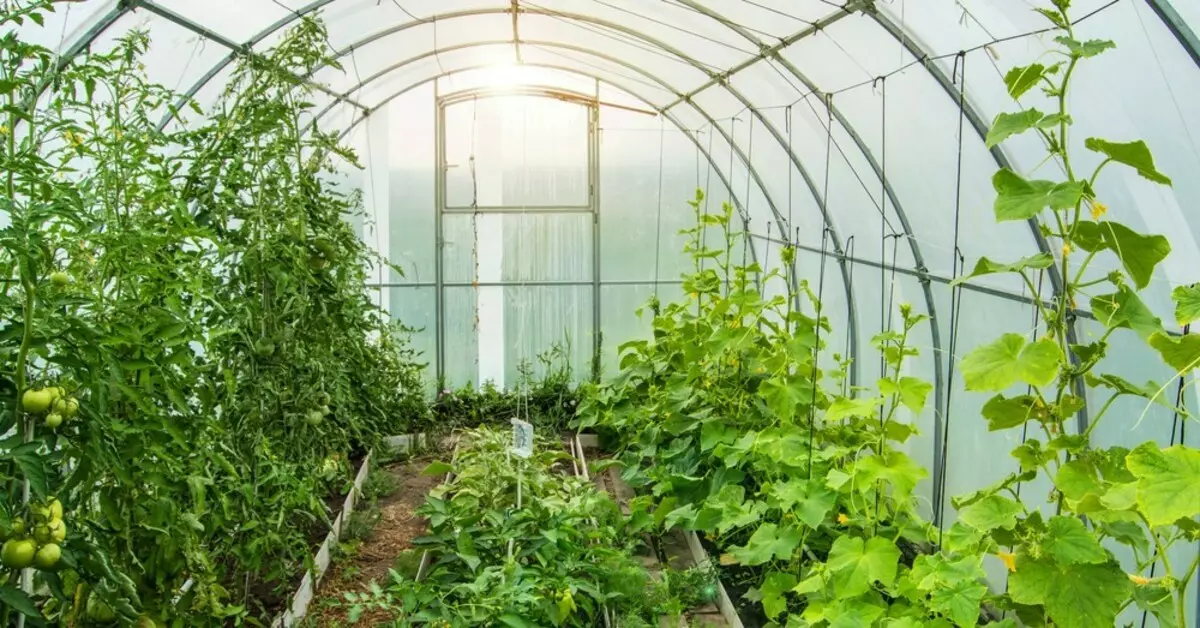
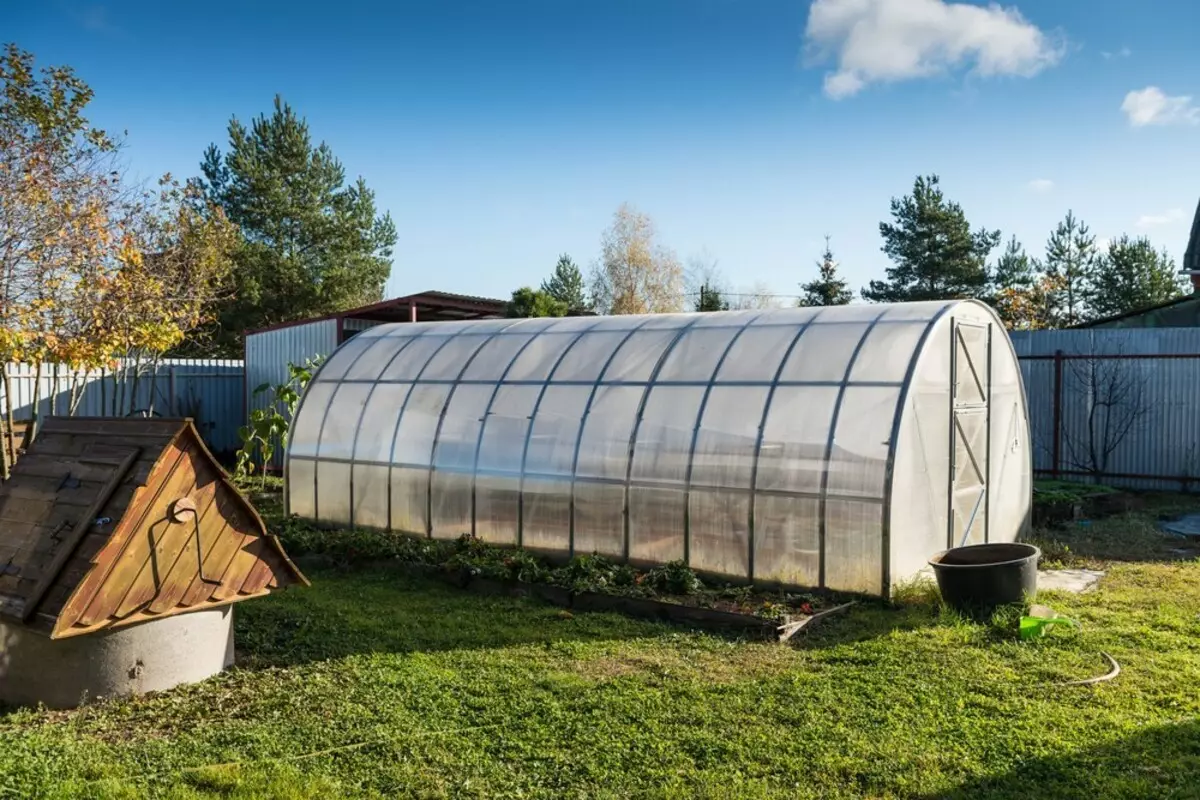
Criteria for selecting material
Determine which polycarbonate for greenhouse is better, it is possible only after acquaintance with the criteria for its choice. We have collected a list of characteristics to which you need to pay special attention.1. Thickness
This is a defining plastic selection criterion. PC sheets should not be too thin, otherwise they will not stand the load and deform. Do not take and very thick panels. They are strong, but they give an excess load on the frame frame and the light radiation is worse. When selecting thickness, several important factors take into account.
- Wind and snow load characteristic of the terrain where greenhouse design will stand.
- Seasonality. For buildings that will be used only in spring-autumn, you can take the plates thinner. It will only be enough for them to withstand snow load. For year-round facilities require sheets thicker. They will also have to maintain heat inside the shelter.
- Frame. The most durable - metal frames. They are withstanding considerable coverage weight. For them, you can choose thick plates. For wooden frames, the panels of the thorushest are suitable, the tree will not stand too much weight.
- Stag of the crate. A small distance between frame elements provides a strength system. For structures of this type, you can choose quite thin sheets.
- When the coating is selected, the form of the structure should be taken into account. If the arched construction is assembled, it is necessary to specify the bend radius of the panel like. The rule is valid: the plate is thinner, the stronger you can be bent it. Thick sheets bent is much worse.
Based on this, you can determine the necessary thickness of the polycarbonate panel. On average, in the Russian conditions for seasonal buildings, plates are chosen by 6 mm, and 10 mm is needed for all-season structures. Many believe that for arched buildings you need a thin coating, because the snow is not delayed on it. This is a mistake, because when thaws on the skates, ice is growing, which keeps snow cover.
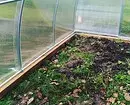
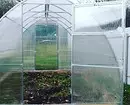
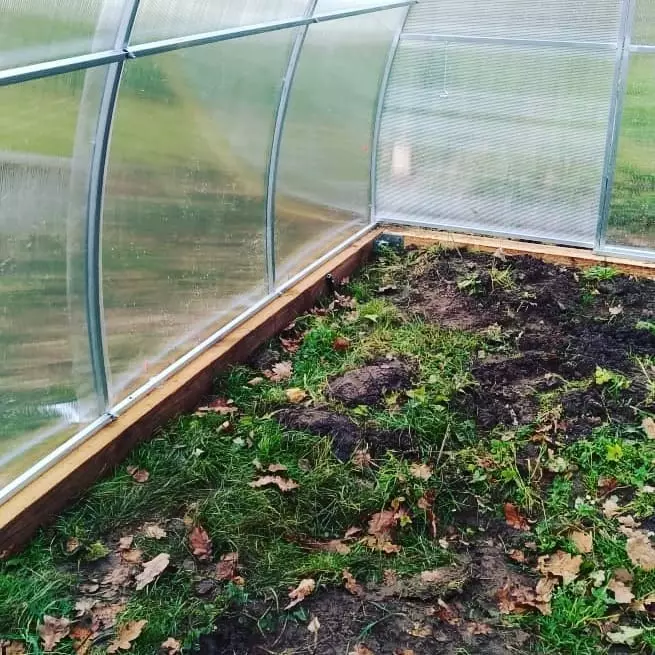
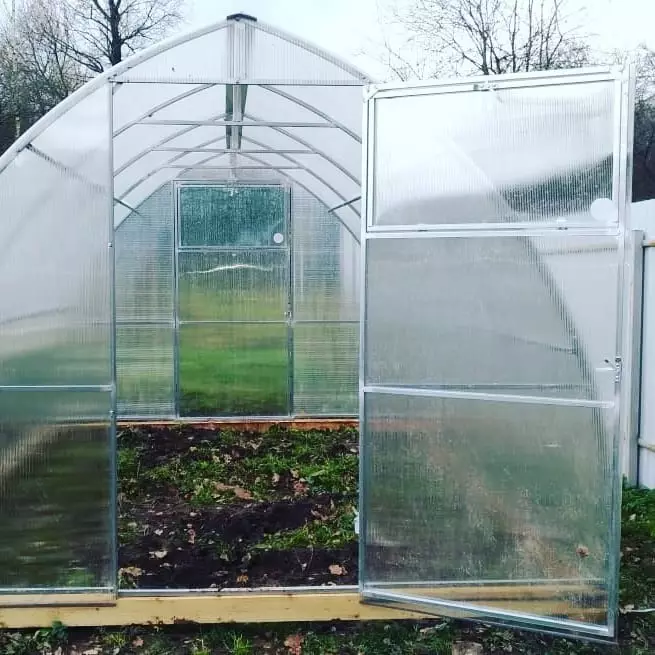
2. Cell geometry and density: which is better for polycarbonate for greenhouses
The structure of a cellular type assumes that thin sheets are connected between themselves with internal partitions. They form the so-called cells of different shapes. Their configuration determines the strength. Describe possible forms of cells.
- Hexagon. It gives the plate maximum strength, but at the same time reduces the light-rescue ability. The greenhouses collected from the coating with hexagon cells need to organize artificial lighting.
- Square. Possess average strength characteristics and normal lightlights. Suitable for facilities with an average load.
- Rectangle. The strength is minimal, but the highest transparency. From such a PC collect shelter without artificial lighting.
The geometry of cells affects the density. Maximum tight plastic - with hexagons cells, below the entire density of PC sheets with cells in the form of a rectangle.
After having studied girlfriend's feedback on what polycarbonate is better for greenhouses, you can draw conclusions about the experience of using the material. It shows that the panels with hexagons are chosen for all-season capital buildings. For seasonal structures, plates with square and rectangular cells are suitable. In the latter case, it is necessary to especially carefully calculate the design so that it can withstand possible loads.
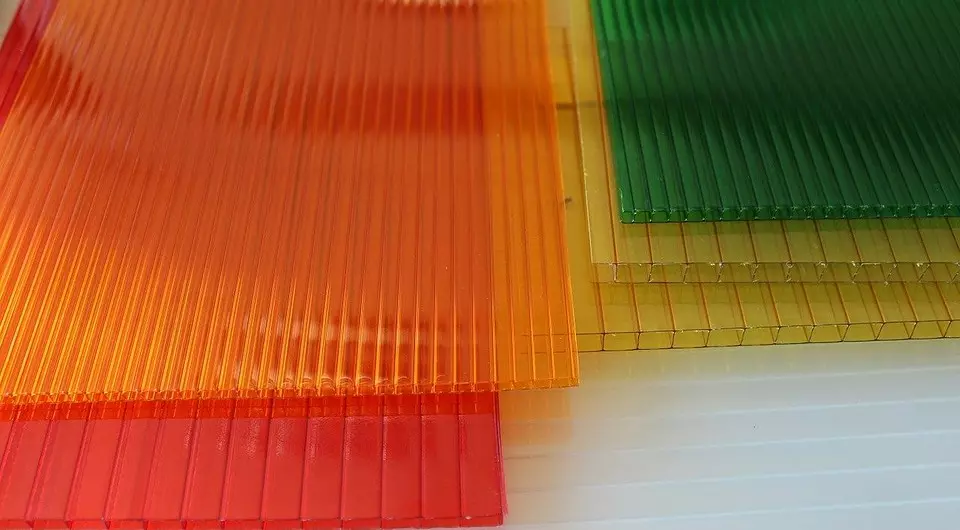
3. Ultraviolet Protection
UV radiation destroys the polymer. Ultraviolet activates photoelectric destruction, which leads to the formation of small cracks. Over time, they become greater, plastic scatters on small pieces. The process proceeds very quickly, until one year and a half years passes to complete destruction. It depends on the radiation intensity.
PC sheets are produced with protection against ultraviolet. It can be different. The best option is the protective film applied by coextrusion. Such a technology of application excludes peeling, the polymer serves 10-15 years. Protection is superimposed on both sides or only one. In the latter case, the plate is marked so that you can understand where the protective coating is located. It is such products that are used to build greenhouses. Double-sided protection here is absolutely not needed.
It is necessary to know that the film is very subtle, it is impossible to consider it. Therefore, when buying should be focused on technical documentation and labeling. The latter is necessarily taken into account when installing. Protection should be placed on the outside. Otherwise, it will be useless.
The high-quality film protects not only the coating, but also landing from the surplus of ultravioles dangerous for them. Not the most conscientious manufacturers produce plastic without special protection. There is no marking, no certificates. Sometimes they report that special additives are added to the plastic, which protect plastics from UV radiation. Even if such additives are added, they do not give the claimed effect. Plastic collapses in two or three years. Do not buy such products, even if I really want to save.
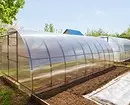
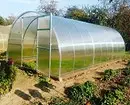
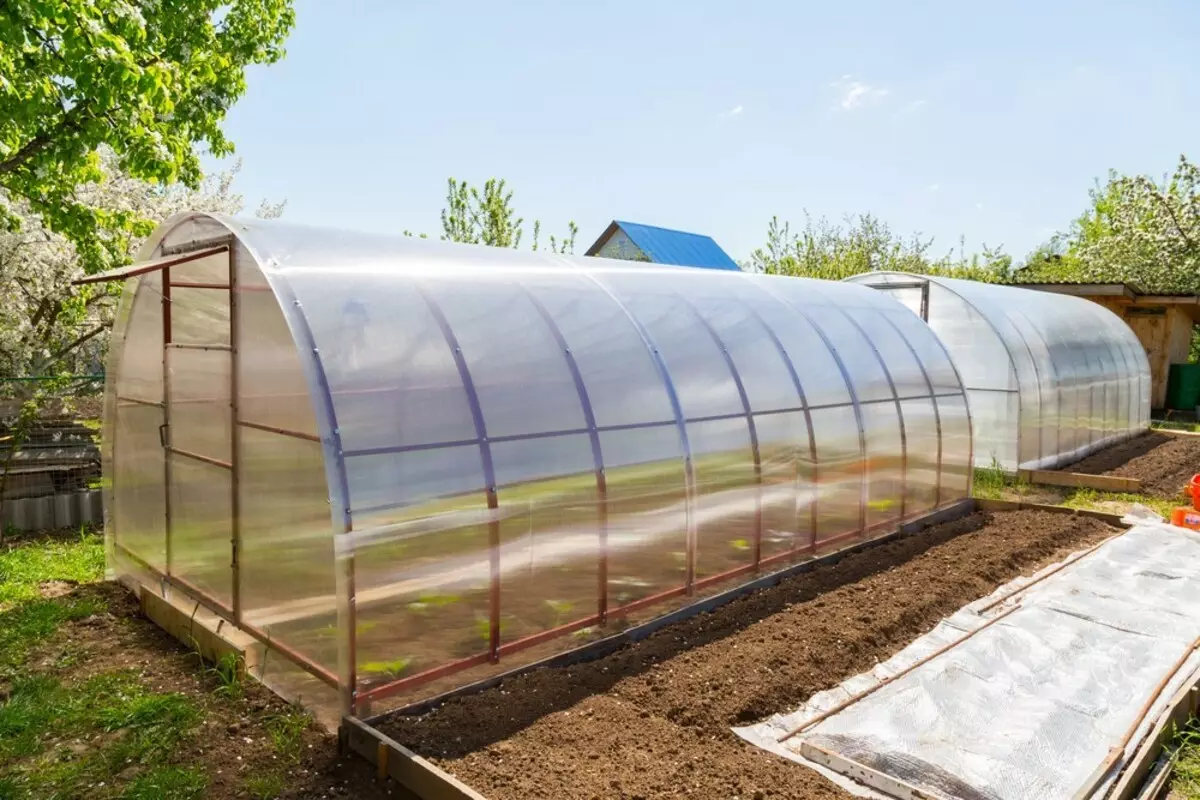
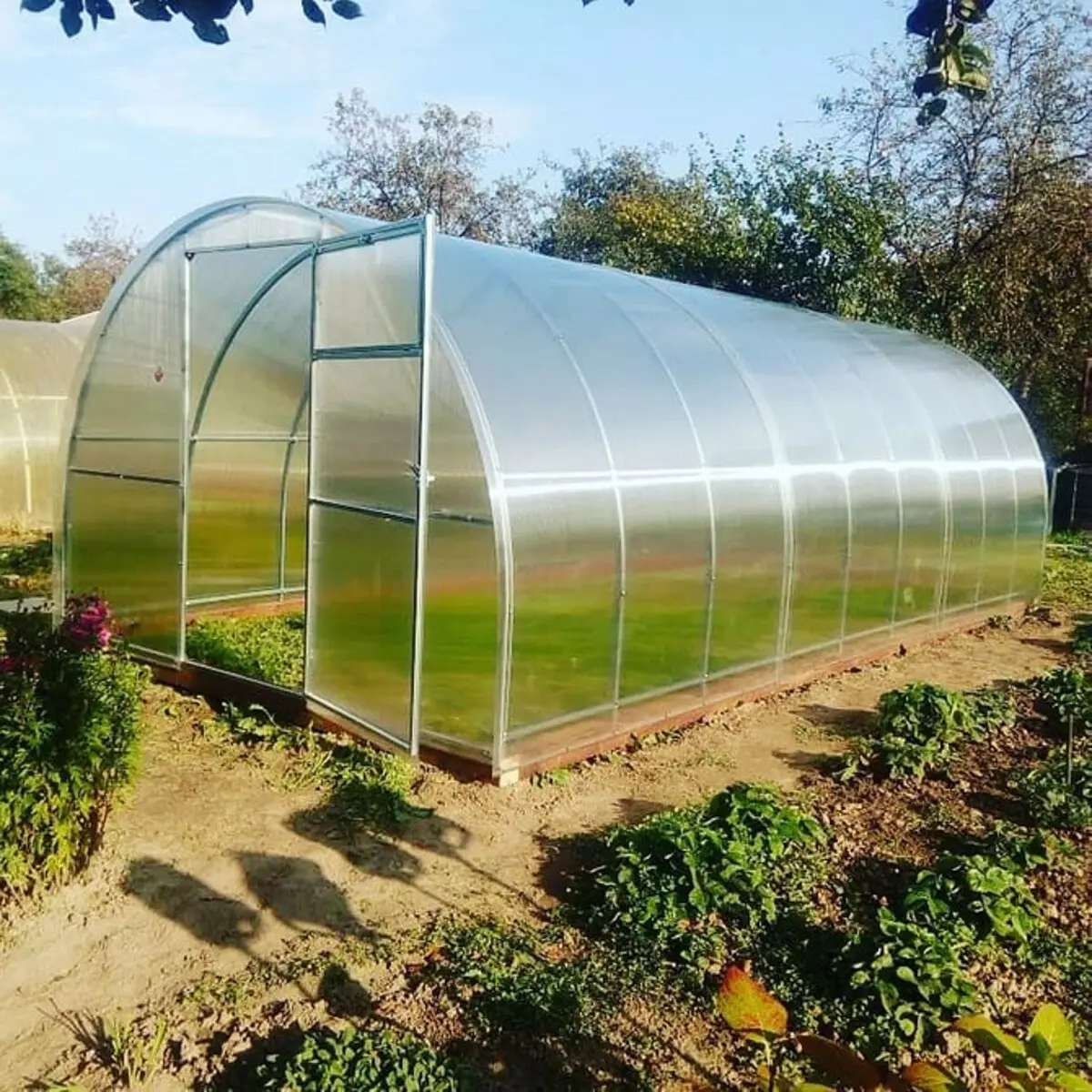
4. Polymer color
In stores you can find pc sheets of different colors. Among the garders there is an opinion that the best of all the plants feel themselves under orange and red coating (allegedly radiation stimulates their growth and development). But in practice it turns out that colored plastic is worse than skipping light. If 90-92% of radiation passes through transparent, then through color - only 40-60%. The exact amount is determined by color. Therefore, if additional lighting is not planned, it is better to take transparent plastic.
5. Dimensional features
All manufacturers adhere to certain size standards. They produce sheets 2.1 m wide and 6-12 m long. The error is permitted several millimeters in both directions. When buying a material, these features must be taken into account. So, if the arral construction is planned, it is desirable to make the length of frame arcs 12 or 6 meters. Then the side junctions will not need.
The dimensions of single and bounce structures are designed so that polycarbonate panels are dispersed without residue. This will help save the material and relocate from unnecessary work on its cutting. The joints of the plates must accounted for frame profiles. This will increase the strength of the finished design. When cutting parts and installation it is necessary to remember that plastic is susceptible to thermal expansion. Mandatory gaps between the trim and framework.
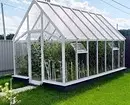
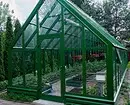
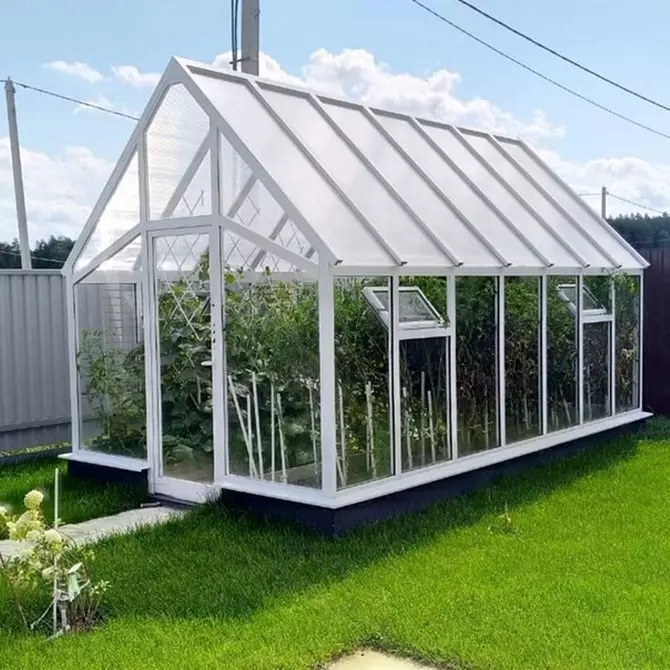
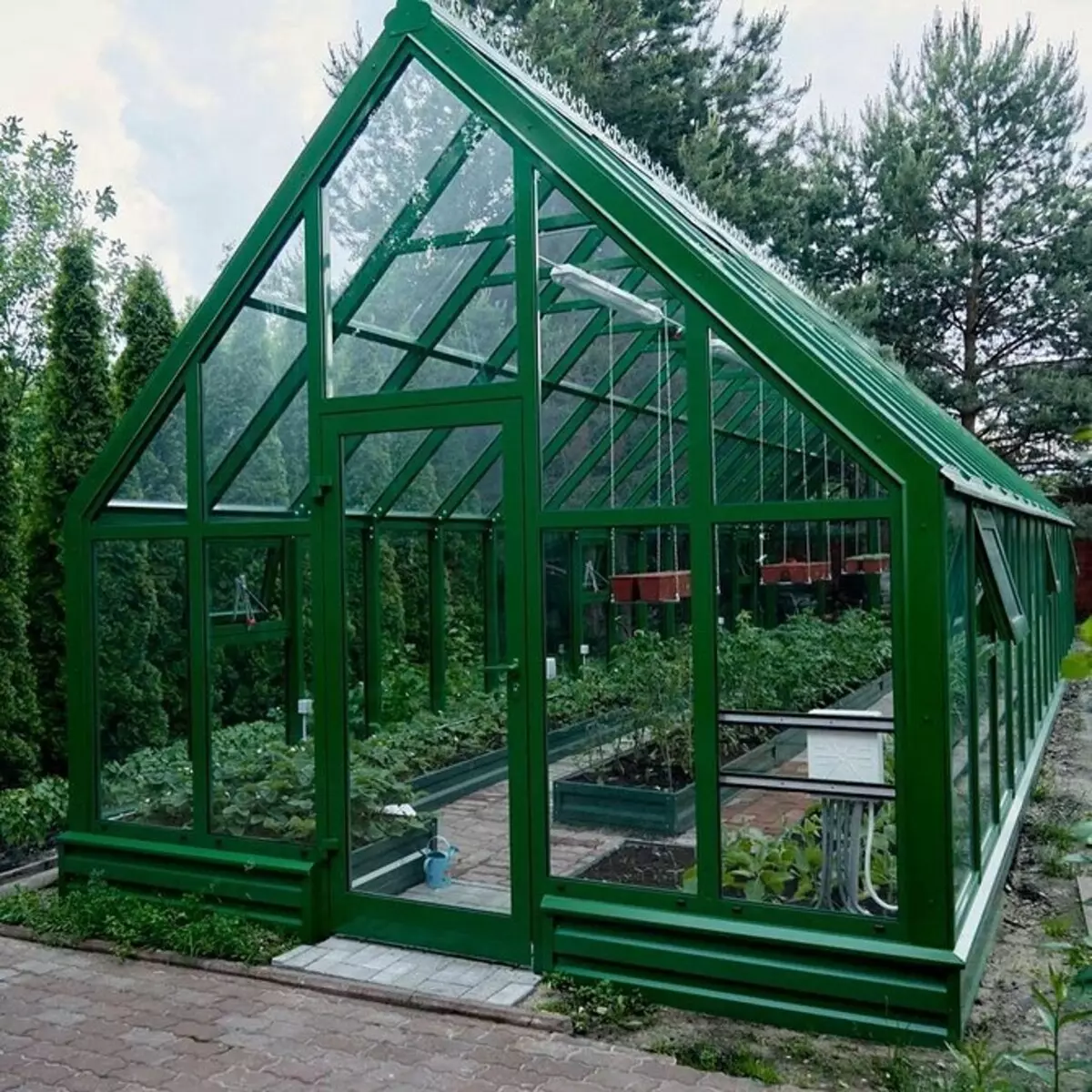
Output
Let's bring a brief summary. For home seasonal greenhouses, a transparent polymer with rectangular or square cells with a thickness of 6 mm should be chosen. If the winter snow, take the material of 8 mm. All-season facilities are collected from plates with square or hexagonal cells with a thickness of 10 mm. The polymer can be transparent or color, in the latter case will also need artificial lighting.






